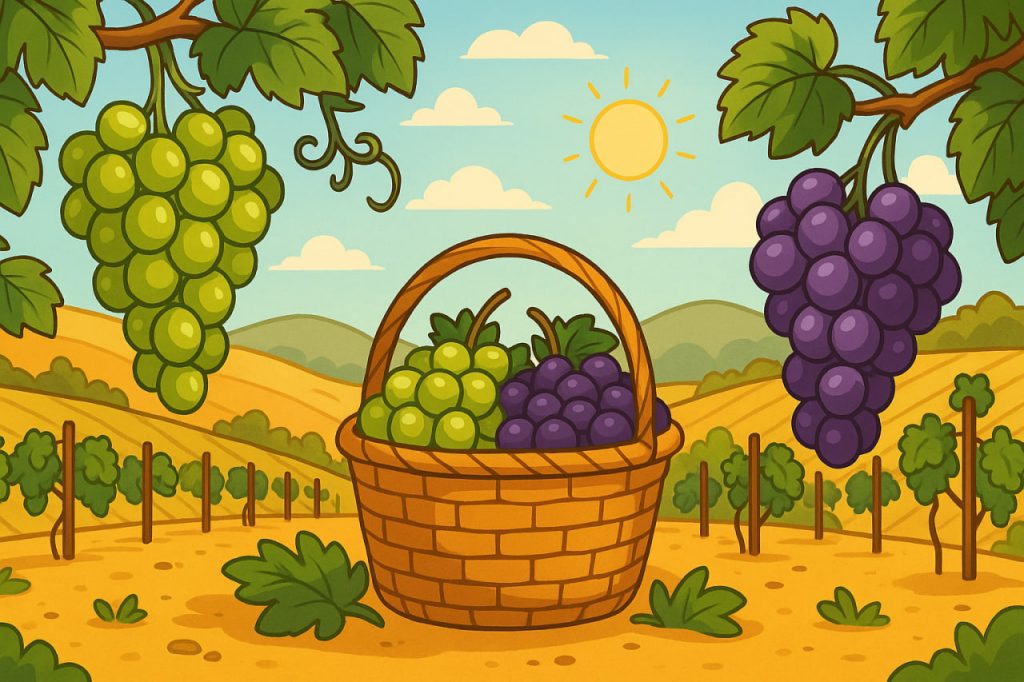Grapes are among the oldest cultivated fruits on Earth, cherished for their sweet flavor, rich nutrition, and remarkable versatility. From ancient vineyards to modern tables, this humble fruit has nourished humanity for over 8,000 years, becoming a symbol of abundance, joy, and longevity. Whether eaten fresh, dried as raisins, or fermented into wine, grapes continue to play a vital role in both diet and culture.
The Origins of Grapes
The cultivation of grapes began in the regions of the Caucasus, Mesopotamia, and the Mediterranean, where early civilizations discovered their potential for food and drink. Archaeologists have found evidence of winemaking dating back to 6000 BCE. Over time, grape cultivation spread through trade routes across Europe, Asia, and Africa, eventually reaching the Americas. Today, vineyards thrive in nearly every temperate region of the planet.
Types and Varieties
There are over 10,000 known varieties of grapes, but they can generally be divided into two main categories: table grapes and wine grapes. Table grapes, such as Thompson Seedless and Crimson, are sweet, crisp, and low in acidity. Wine grapes, like Cabernet Sauvignon or Chardonnay, are smaller, thicker-skinned, and contain more sugar and tannins — perfect for fermentation. Grapes also come in a range of colors, including green, red, purple, and black.
Nutritional Value and Health Benefits
Grapes are packed with vitamins C, K, and B6, as well as potassium, fiber, and powerful antioxidants like resveratrol. These nutrients support heart health, improve blood circulation, and protect cells from aging. Regular consumption of grapes can help lower blood pressure, boost immunity, and maintain healthy skin. Their natural sugars provide quick energy, making them an ideal snack for active lifestyles.
Grapes in Culture and Symbolism
Throughout history, grapes have carried deep cultural meaning. In ancient Greece and Rome, they symbolized fertility and celebration, often associated with the god Dionysus (Bacchus). In Christian tradition, wine made from grapes represents life and communion. Even in modern times, grapes are a universal sign of prosperity — in Spain, people eat twelve grapes at midnight on New Year’s Eve to bring luck for the months ahead.
From Vine to Table
Grapevines require a warm climate, sunlight, and well-drained soil to flourish. Farmers prune them carefully to balance fruit production and leaf growth. During harvest season, grapes are hand-picked or machine-gathered and quickly processed for wine or sale. Modern viticulture combines traditional methods with technology — drones, sensors, and data analytics help monitor soil and weather conditions for optimal yields.
Interesting Facts
- Grapes are 80% water, which makes them naturally hydrating.
- The largest grape-producing countries are Italy, Spain, China, and the United States.
- One grapevine can live for over 100 years under proper care.
- A single bottle of wine usually requires about 600–800 grapes.
Glossary
- Viticulture — the science and practice of growing grapes.
- Resveratrol — a plant compound found in grape skins that has antioxidant properties.
- Fermentation — the process in which sugar is converted into alcohol by yeast.
- Tannins — natural compounds in grape skins and seeds that add flavor and color to wine.
- Antioxidants — substances that protect cells from damage caused by free radicals.

